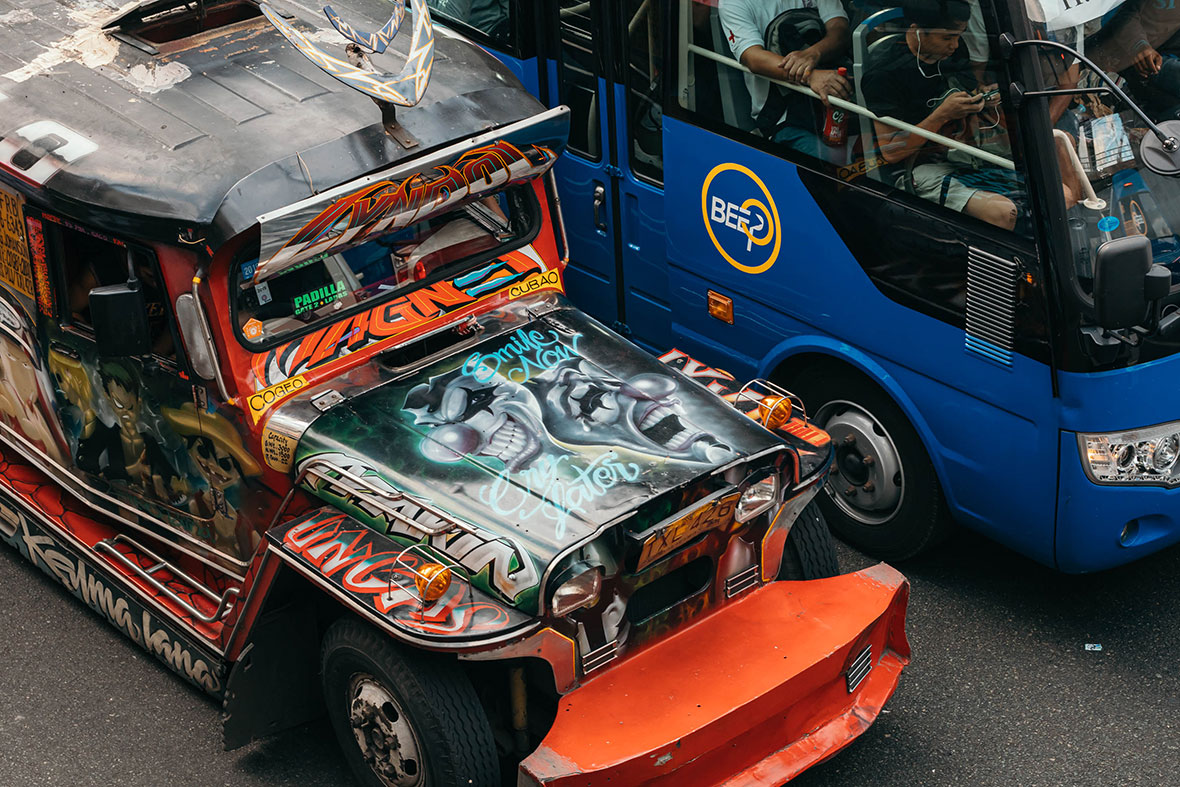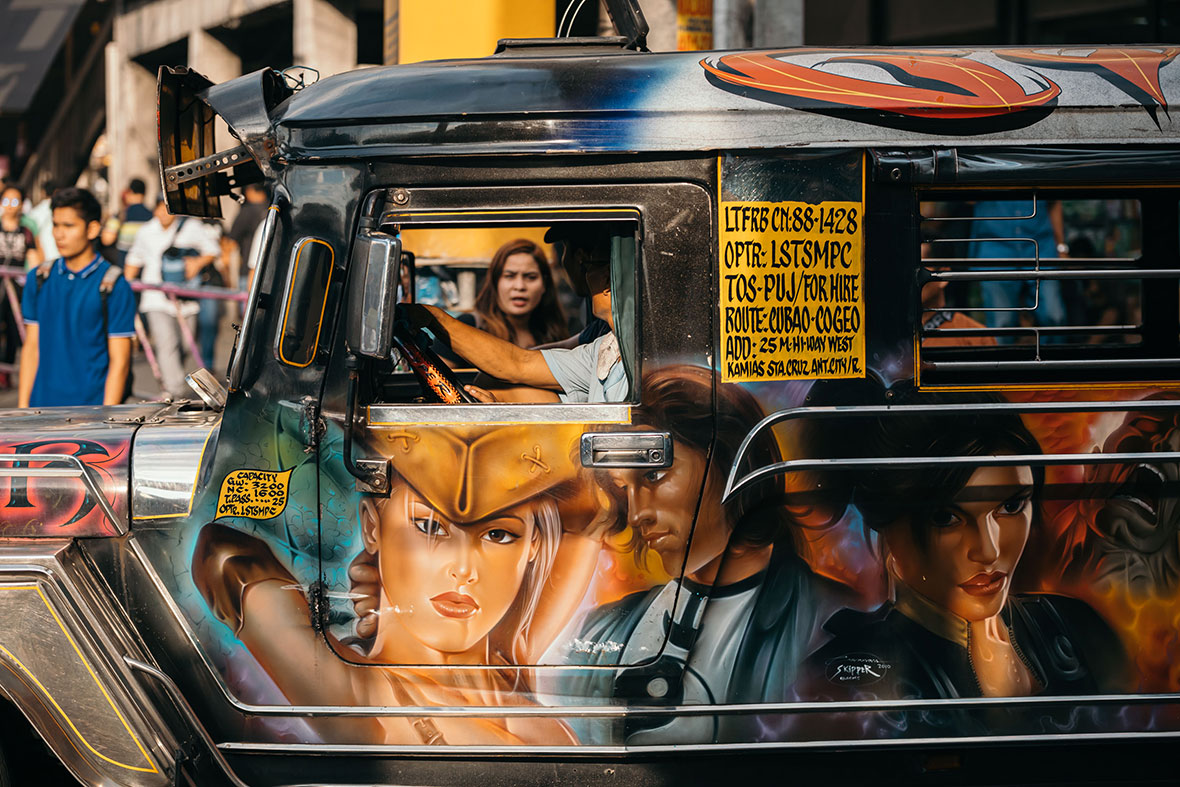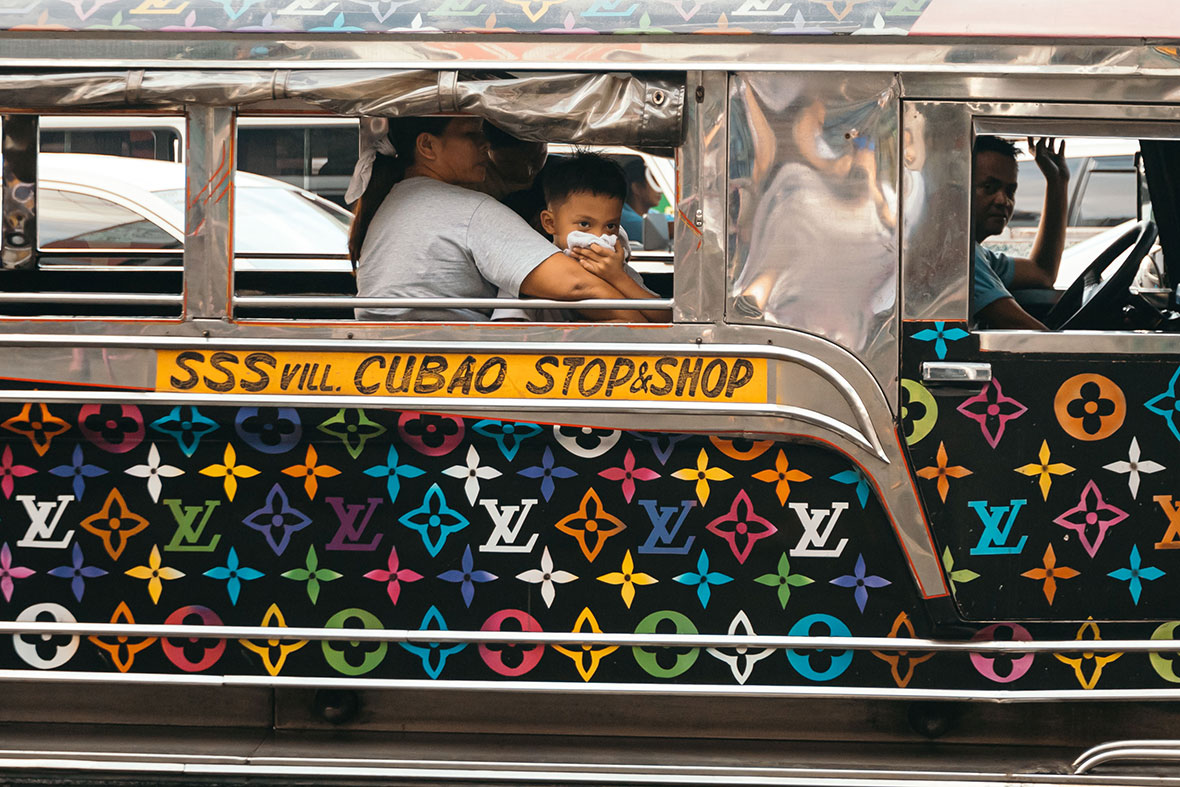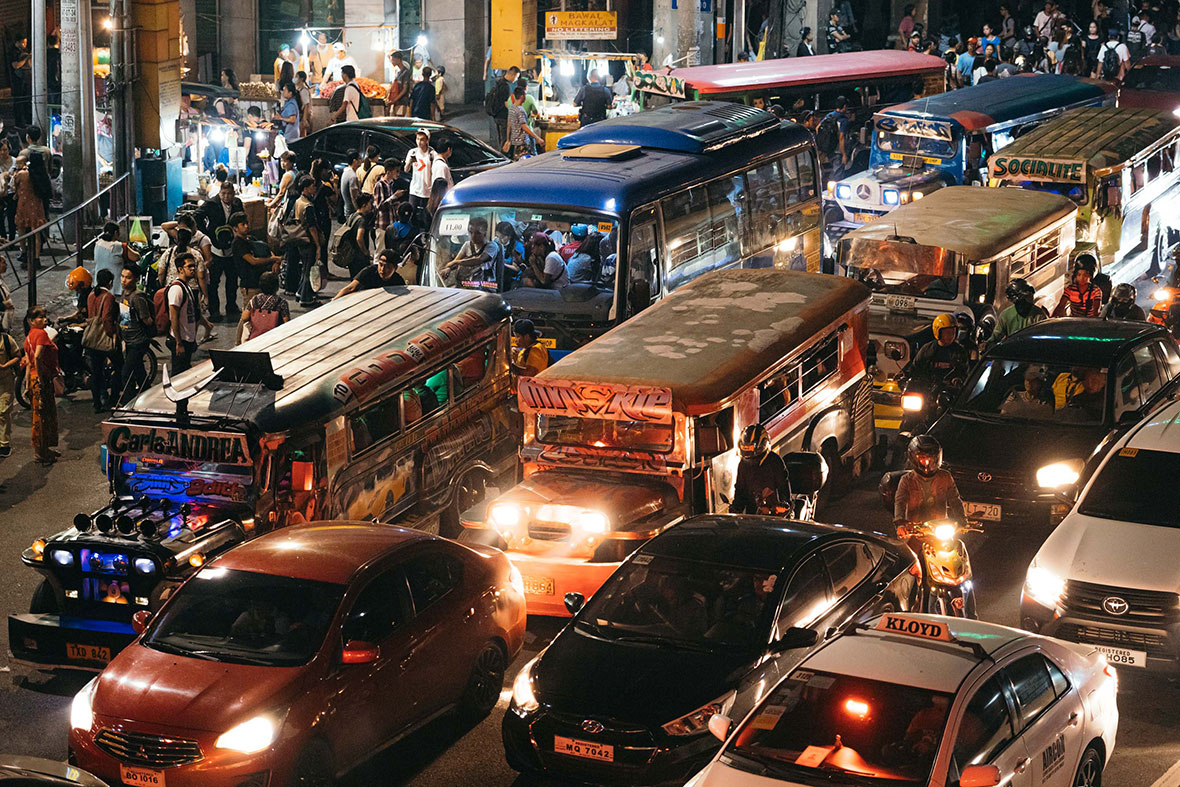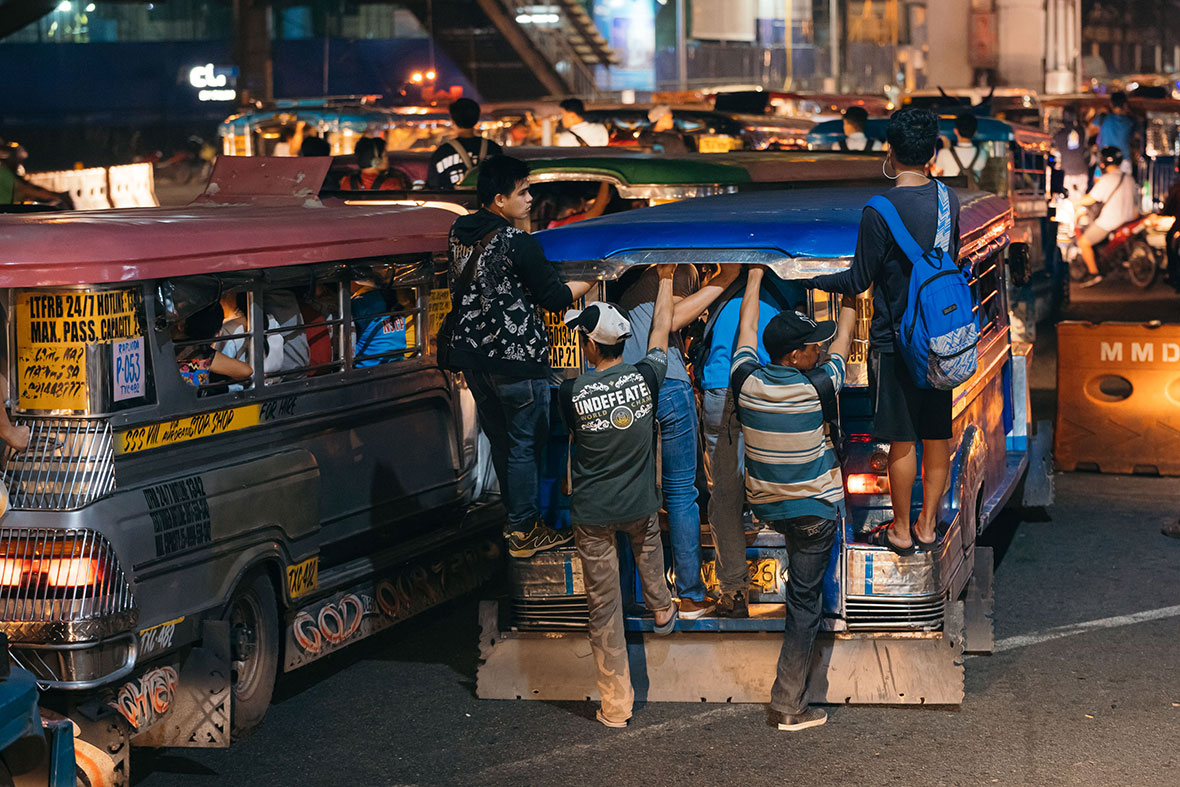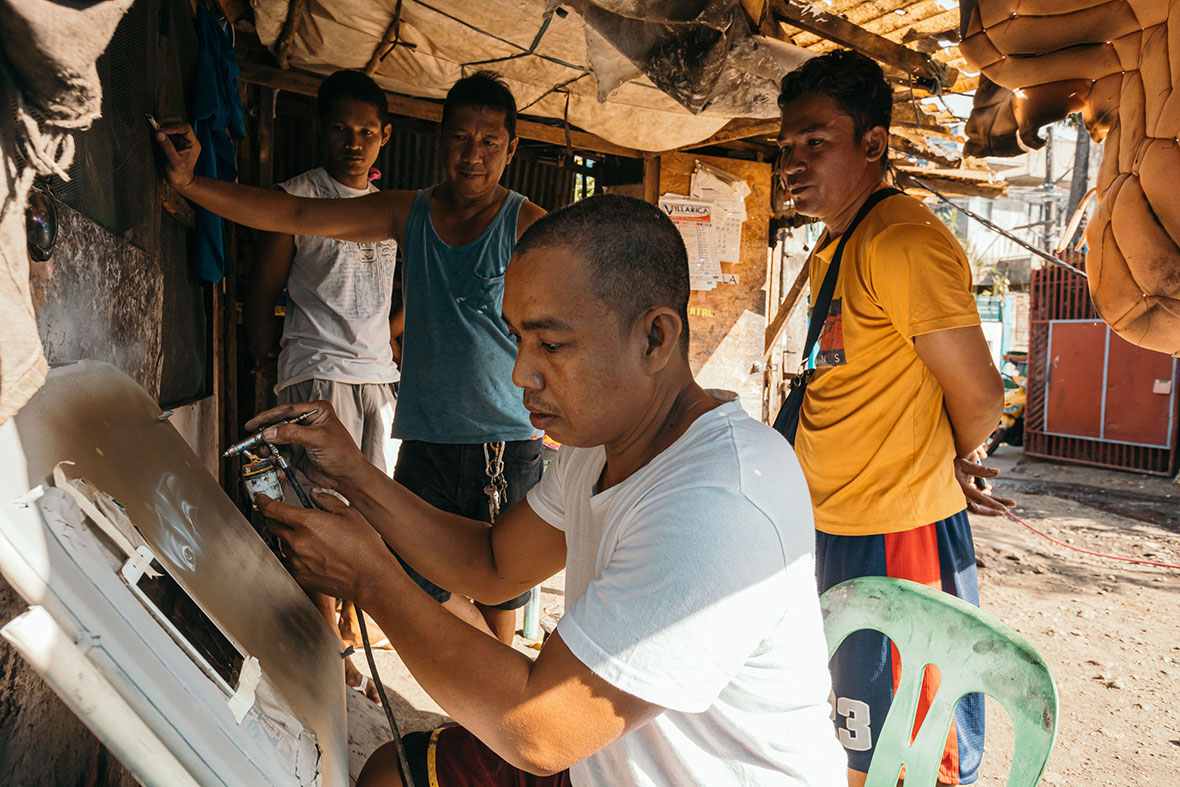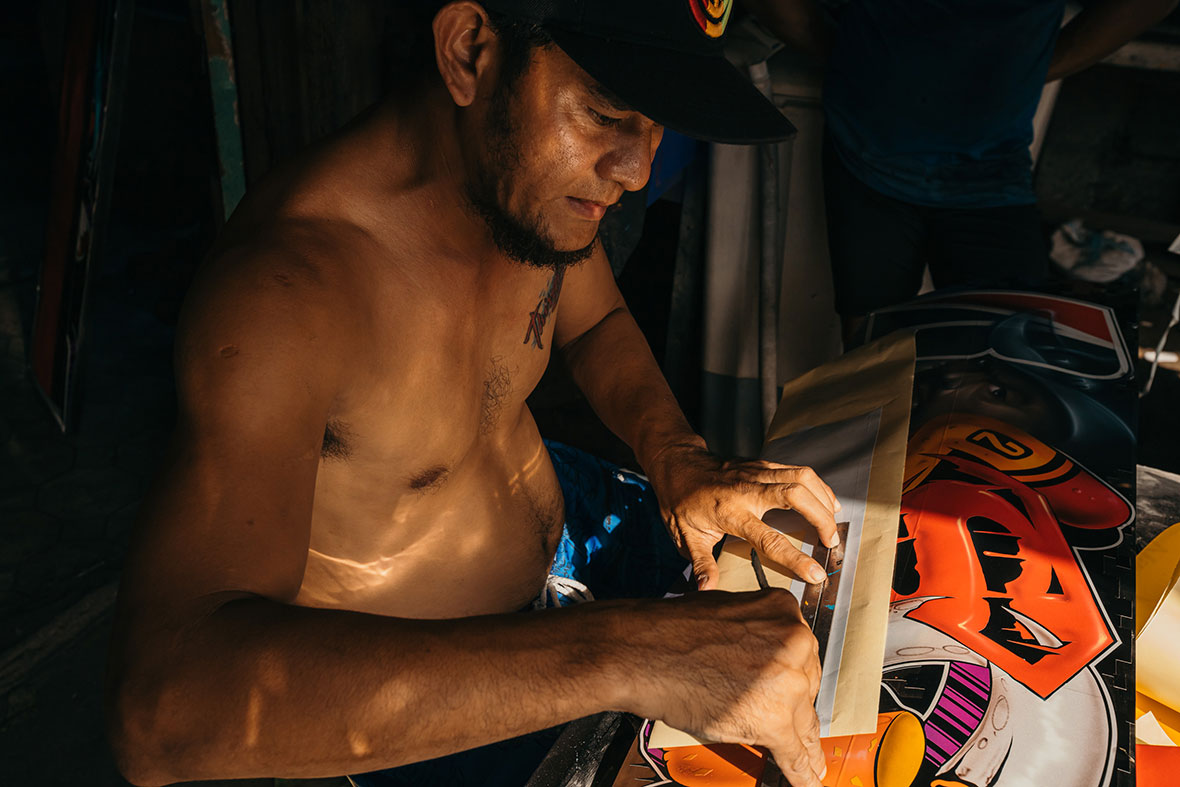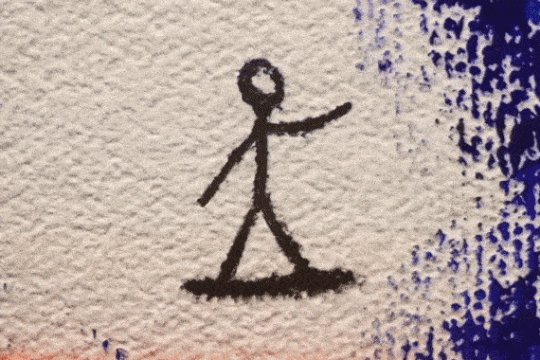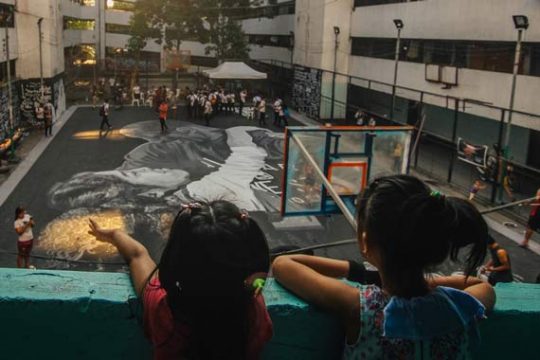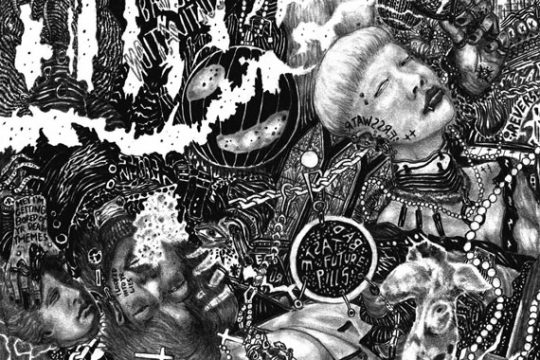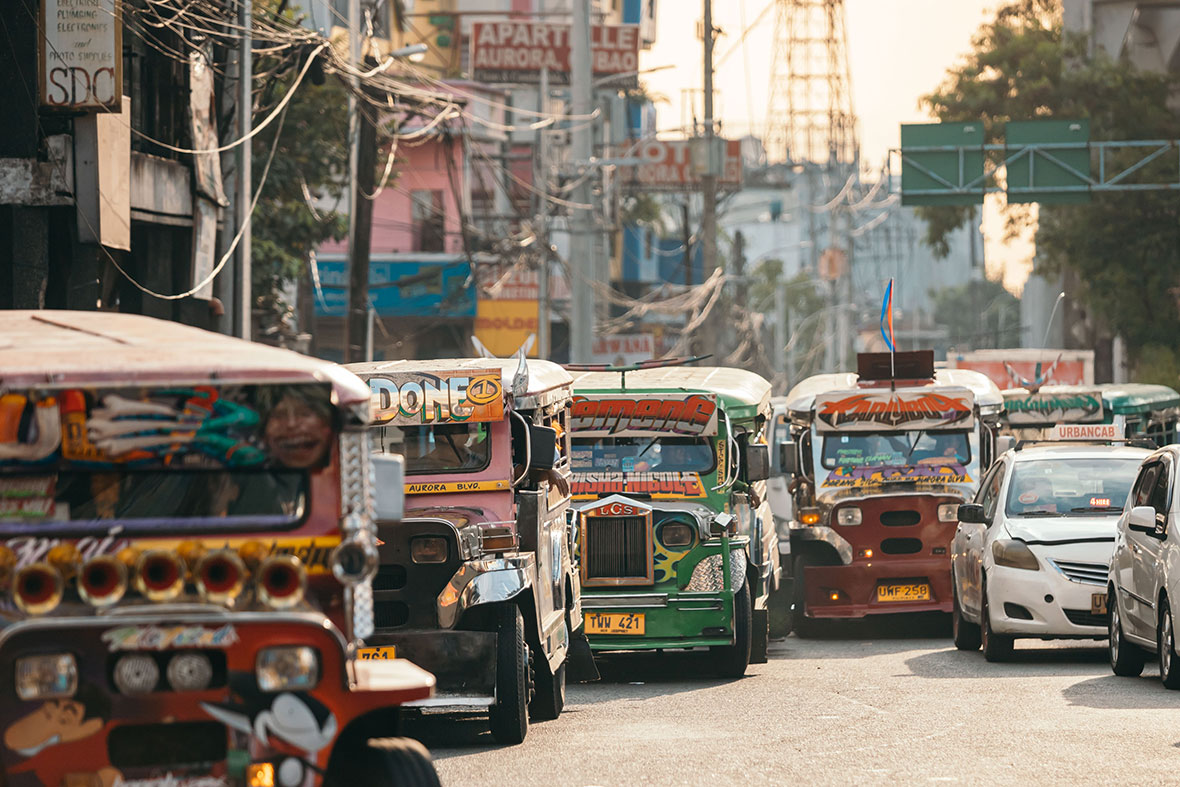
It’s rush hour in Metro Manila, which means gridlocked streets for several hours. The city is one of the world’s most congested. Within this tangle of cars and scooters and stationary running motors, one type of vehicle stands out from the rest: the jeepney.
Jeepneys are a uniquely Filipino mode of public transportation that appeared after World War II, which left the country’s infrastructure severely damaged. After the war, American troops left behind Willy Jeeps—the ubiquitous four-person green jeeps of war-movie fame—as it was costly to ship them home. Locals set about retrofitting them to meet their transportation needs. Though they were born as a temporary solution, they’ve now become a mainstay across the country. Most of the original jeepneys are out of commission, and the ones found on the road today were produced by local car manufacturers in the years since.
马尼拉是世界上最拥挤的城市之一,这里市中心的交通高峰时段,路上往往会堵车好几个小时。在被小车、踏板车和各种车辆挤得水泄不通的路上,一种交通工具的身影尤其突出,那就是吉普尼巴士。
吉普尼巴士是菲律宾所特有的公共交通工具。这种巴士出现在二战之后,当时菲律宾整个国家的基础设施严重受损。战后,美国军队留下了许多 Willy Jeeps。由于运回美国的成本太高,这些汽车经过当地人的改造,使这种在战争片里经常出现的四人座绿色吉普车变成了一个能用来满足日常需求的交通方式。虽然最初吉普尼只是作为临时的交通解决方案,但现在,这种巴士依然是菲律宾各地常见的交通工具。如今,路上行驶的吉普尼是原来的报废车辆,它们经过当地汽车厂的改良被重新投入使用。
A typical jeepney can carry about 20 people in the back. People sit on twin benches facing each other, with a few others hanging off the back if it’s packed. The base fare is 10 pesos, or around US $0.20, and they travel just about anywhere you need to go. In a country with limited bus routes and an even smaller rail line, it’s often the only affordable way to get where you’re going, unless you’re willing to pay premium rates for a taxi or ride-hailing app. Once you climb on, you hand your cash to another rider and they pass it down to the driver, who then counts out change and sends it back down the line, often while driving. The ceilings are low and the windows are difficult to see out of, especially when crowded. Rain, heat, and fumes from nearby traffic easily enter the cabin, and in some of the more dilapidated jeeps, so does its own exhaust. When your stop comes, you call out to the driver or knock on the ceiling and jump out, sometimes directly in the middle of the street.
Jeepneys are often blamed for adding to Manila’s congestion, seeing as how their drivers often swerve across lanes to pick up customers and make frequent stops. But with the increase in population and rise in personal automobile ownership, the megacity is groaning under the strain now more than ever.
一辆吉普尼通常大约可以乘搭 20 人。乘客们通常会面对面坐在车内两侧的长椅上,满座后,还会有一些乘客趴在巴士的后架上。只用花上 10 比索(约一块四人民币)的车费,就能将你送往各个目的地。在这个公交线路不多、铁路有限的国家,吉普尼是人们唯一经济实惠的出行方式,否则就要乘坐昂贵的出租车或网约车。上车后,你只需将车费交给另外的乘客,由他们挨个传递到司机手里。司机一边开车,一边数要找回的零钱,再将钱交给乘客,原路返还到你的手中。车顶很低,乘客很难将头从窗户伸出去,尤其在人群拥挤的时候。雨水混杂着热气和四周车辆排出的尾气钻进车内,一些甚为破旧的吉普尼巴士,本身的废气也会窜进来。到站时,你可以大声告诉司机或敲敲车顶,有时你有可能会在马路中间下车。
很多人认为吉普尼加剧了马尼拉的交通拥堵问题,因为司机常常因为载客而突然变换车道,停车也比较频繁。但是问题可能没那么简单:随着私家车保有量的增加和人口的爆炸式增长,这座大城市的马路越来越喘不过气来。
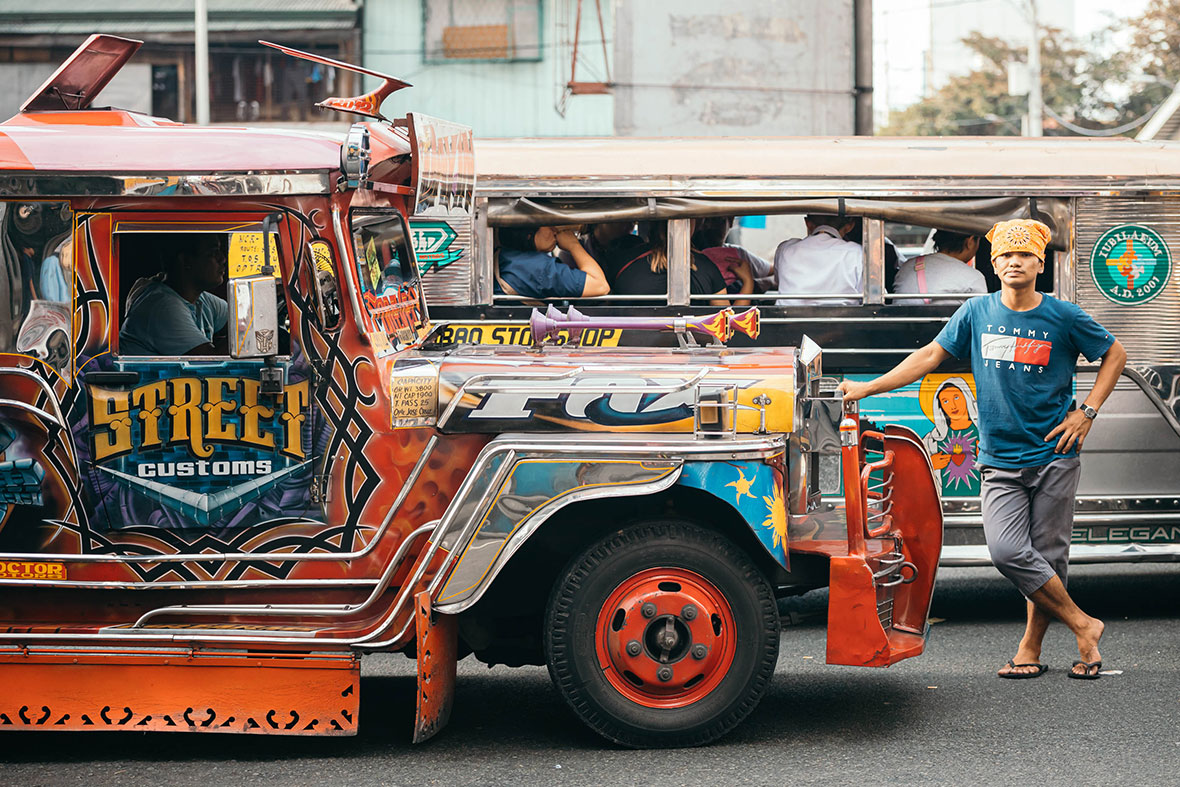
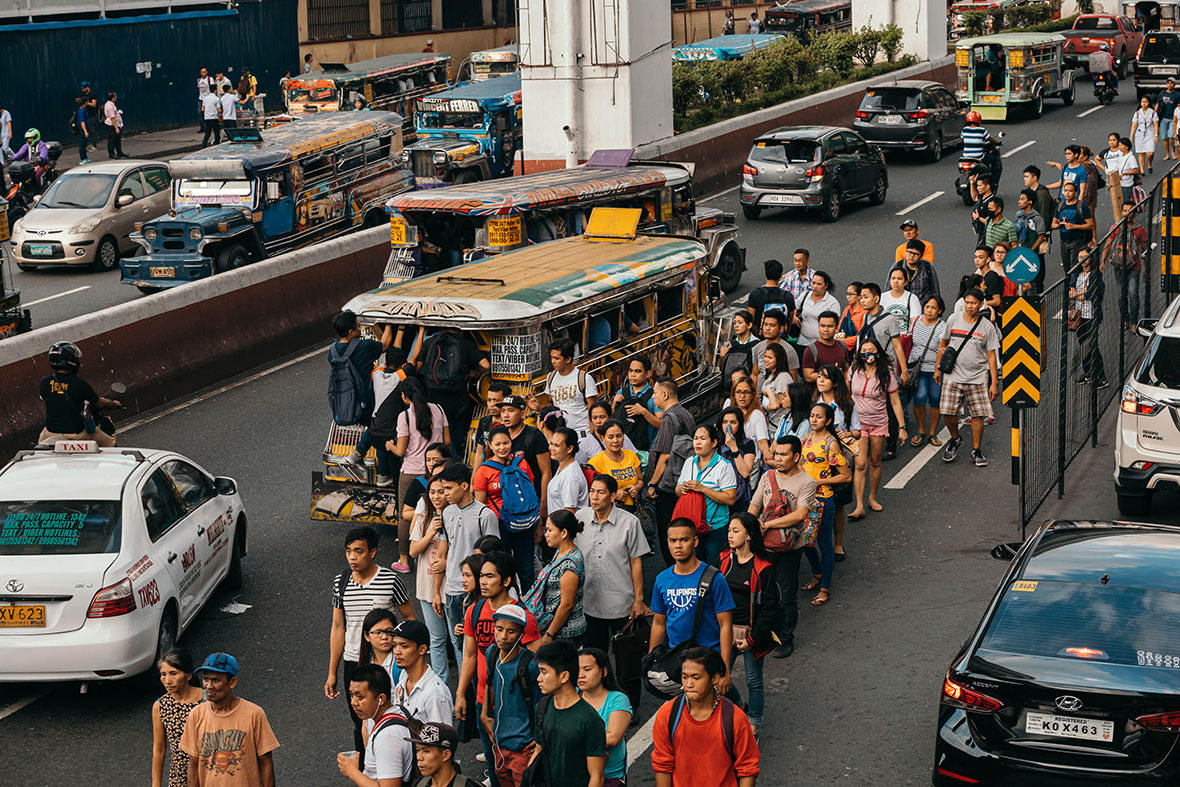
Jeepneys are best known for their gaudy bodywork, covered with a mix of pop-culture imagery, Catholic symbols, and Americana art like flags, US monuments, and more. It’s a bizarre mix that attests to the country’s history of colonization. One of the best places to spot these roving canvases is Aurora Boulevard, a major thoroughfare in Quezon City where throngs of jeepneys pass through day and night, and it’s where we first heard about Giele Nicola, one of the most revered jeepney artists in town.
The art found on Jeepneys differs a bit from area to area, but the vehicles Nicola works on and many others around Aurora feature modifications like designs cut into the mud flaps, ornate metal wiring around the brake lights, and LED lights that glow from the undercarriage and inside the cab. Back wheels are raised while the front axle is dropped low, showing off cartoonish hood ornaments and unnecessary, prolific antennas. Even the inside of the wheel wells are often painted with glow-in-the-dark paint.
吉普尼以其华丽的车身而闻名,上面布满了各种流行文化图像、天主教图案以及美式旗帜、美国标志性建筑等文化元素。这种奇怪的组合也了揭示出一段菲律宾被殖民的历史。欣赏这些 “巡回画布” 的最佳地点之一是奎松市的奥罗拉大道(Aurora Boulevard),那里从早到晚都能看到吉普尼巴士在路上穿行。也正是在这里,我们第一次听说了 Giele Nicola,他是当地最著名的吉普尼艺术家之一。
城市中每个区域的吉普尼艺术都略有不同,Giele 和奥罗拉地区的艺术家在设计时喜欢对吉普尼进行车体的改装,例如切入挡泥板的设计、在刹车灯四周环绕金属线、为底盘和车内装饰的 LED 灯。他们降低前轴,升高后轮,将卡通风格引擎盖设计和纯粹装饰性的天线设计公示于路人。就连车轮拱板内也常常涂满了荧光的染料。
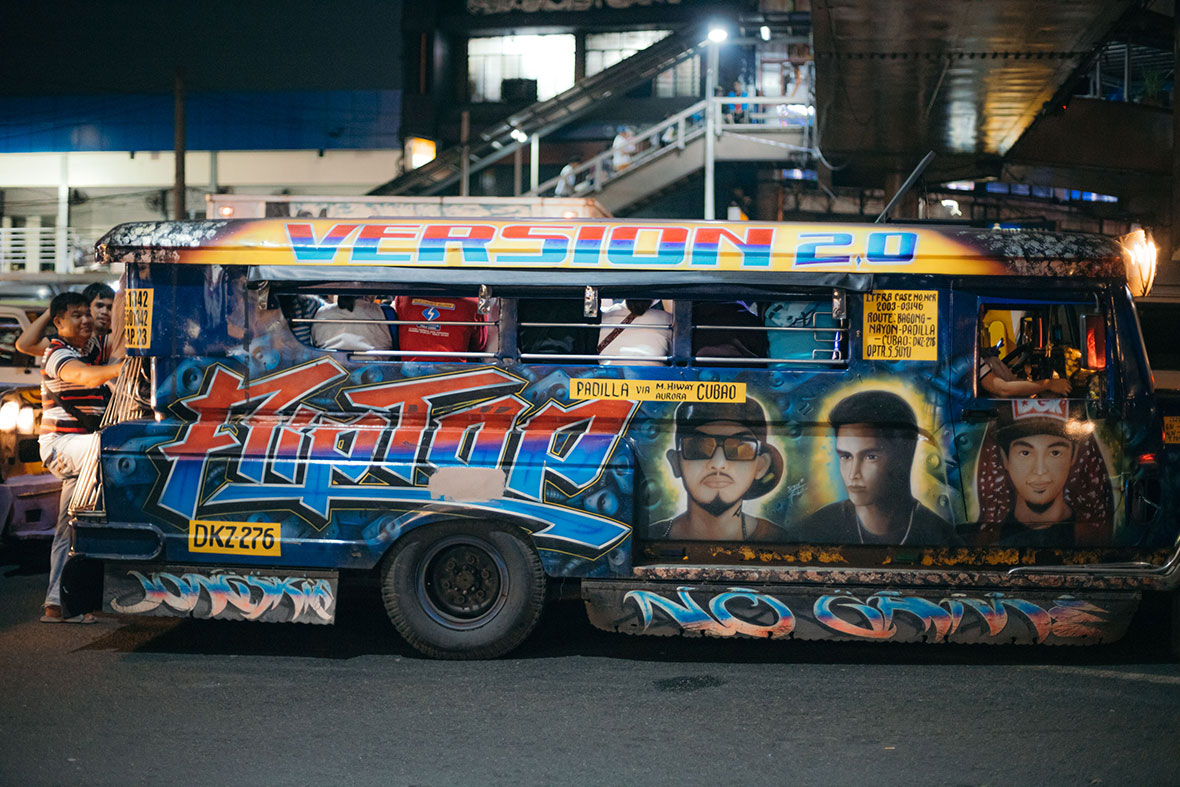
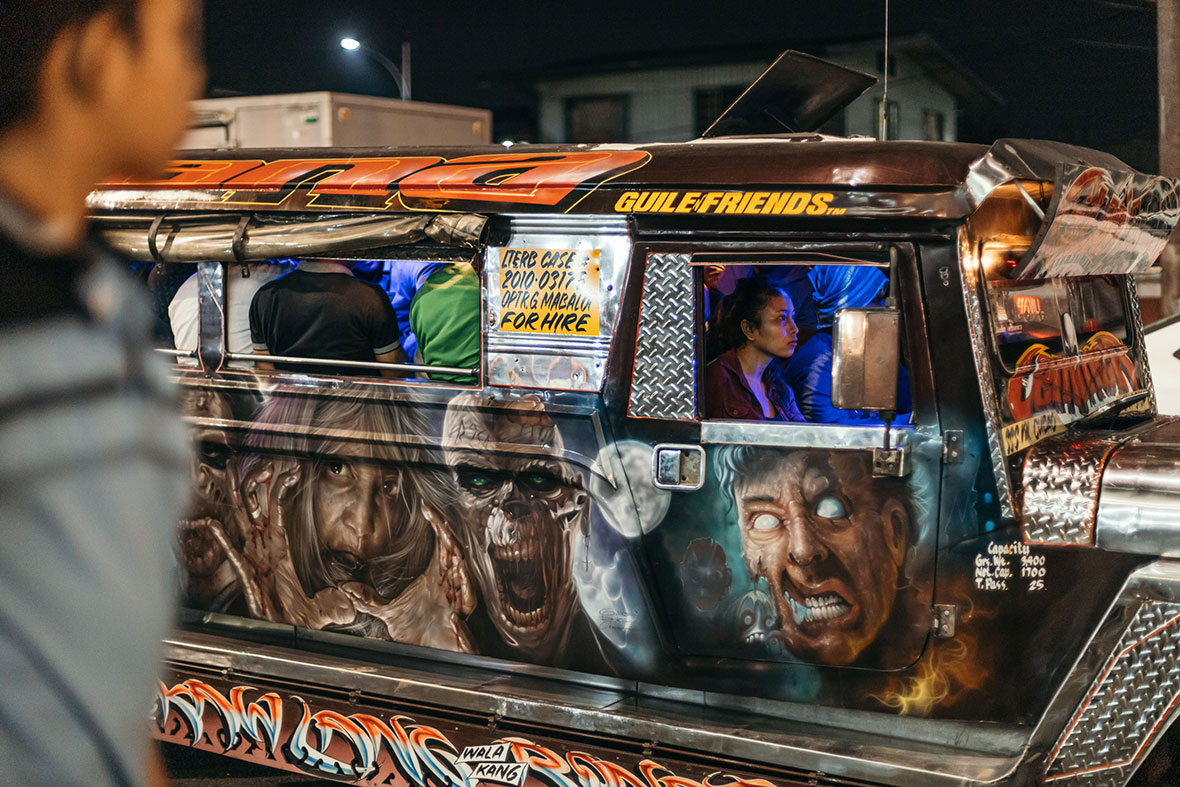
Nicola’s garage is in Marikina, on the eastern end of Aurora Boulevard, down a quiet residential backstreet where jeepneys line the sidewalks. On the day of my visit, four jeeps were crammed inside the open-air garage, as a group of men huddle under a canopy to the side. One of them is Nicola, airbrushing a portrait of Jesus on a loose side door. A compressor hose from his nozzle leads to a running engine placed on the ground, itself attached to an old car that hasn’t seen the road in years.
Nicola has been at this for 20 years now. He got his start at 19, freelancing for Morales Motors, a well-known jeepney manufacturer that operates their own body shops. But even before that, he often painted bicycles and jeepneys for fun, working freehand with a brush in the traditional jeepney one-stroke style, which is handwriting style of flat brush calligraphy. Impressed with his work, Morales brought him on board, but within a year he decided to open his own garage. “Jeepney art was on the rise back then,” he said, barely glancing up from his work. “It was a lot simpler then, and just starting to evolve. The jeepney industry was at its peak, with garages and artwork everywhere.” Over the years, he’s become known for specializing in hyper-realistic paintings. But his garage does everything, including metalwork and repairs.
Nicola opened the garage with his partner Arturo Cinco, who goes by the alias Rokba. The two met at Morales Motors when they were both still teenagers. Rokba specializes in custom decals, which he cuts out freehand and applies in layers. They can be up to six feet wide and two feet high, with a dozen different colors. “I never did any other kind of art,” he says. “Jeepney art was my passion and my hustle from the start.”
Nicola 的车库位于奥罗拉大道东端的马里基纳(Marikina),一个安静住宅区里的小巷。路边就停着一排的吉普尼车。我去参观车库那天,露天车库里停着四辆吉普尼车,一群人挤在旁边的遮篷里。其中一个就是 Giele,他正在用气笔给一块被拆解下来的车门喷绘,上面画着耶稣的肖像。气笔的压缩空气管连接着地上的发动机,而这台发动机本身则是来自一辆报废多年的旧车。
Giele 从事这个行业已经有 20 年,他从 19 岁开始给当地一家著名的吉普尼制造商 Morales Motors 干私活。但早在此之前,他也常常在自行车和吉普尼车上找点乐子。那时候,他喜欢用平刷的字体书写方式,在吉普尼车身上一笔划过。他当时的的作品令 Morales Motors 印象深刻,并受邀加入团队。但是一年后,他决定开设自己的车库。 “那时候吉普尼艺术正在兴起。”他头也不抬地说道,“相比现在,吉普尼艺术刚开始流行的时候要简单很多。在吉普尼行业的全盛时期,吉普尼艺术和车库遍地都是。”这些年来,他凭借超现实主义的风格绘画而闻名。
除了绘画和改装,Giele 的车库提供金属加工、维修等各种服务。该车库是他和合伙人 Arturo Cinco (又名 Rokba)共同创办。他们年轻时在 Morales Motors 一起工作认识。Rokba 擅长制作贴花,通常情况下,他会先用手剪出图案,再一层层贴在车上。这些贴花可能达 6 英尺宽、2 英尺高,拥有十几种不同的颜色。“我从来没做过其他艺术。一直以来,吉普尼艺术就是我的热情和动力所在。”他说。
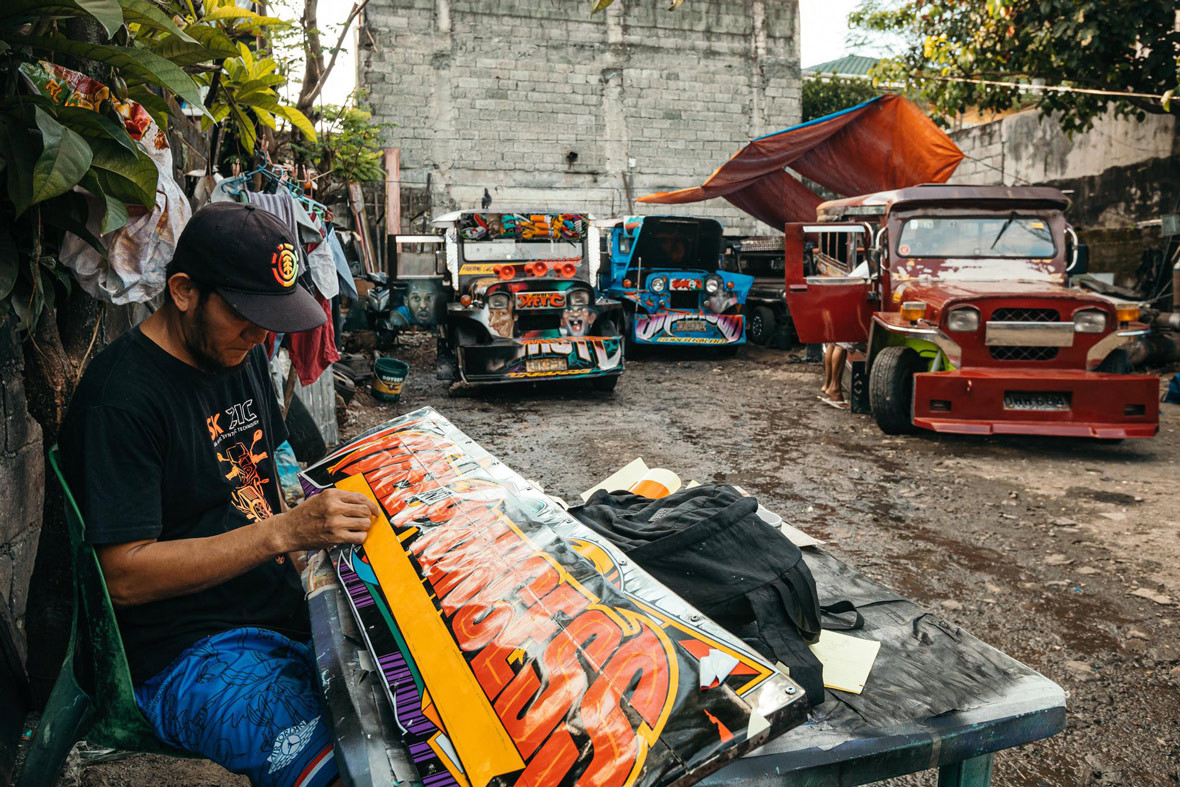
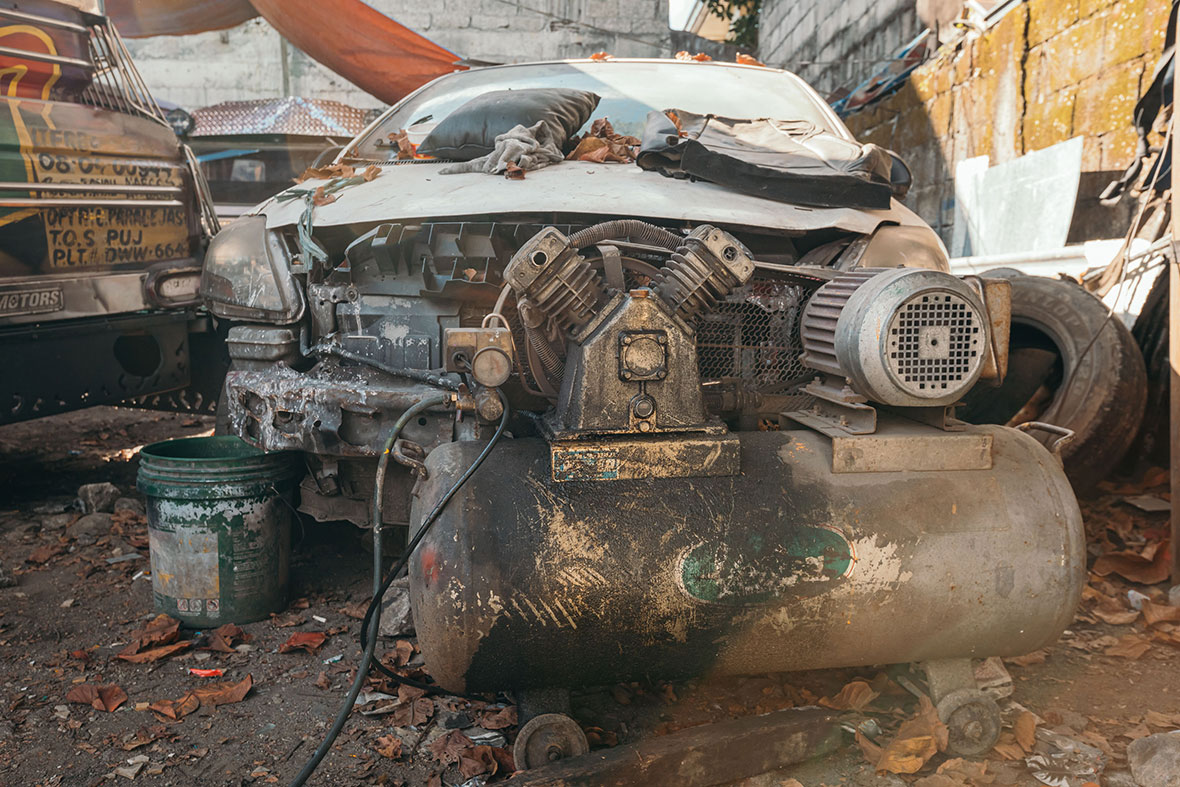
For years, business boomed. A full customization, with all the bells and whistles, costs around $4,000 and takes two weeks—a good racket, considering that it’s about what the average family makes in a year. As more garages appeared, the market became oversaturated, but business took a significant dive a couple years ago. In 2017, the government announced a modernization program that would phase out most of the classic jeepneys with newer models. (Jeepneys are classified as “public utility vehicles.”) Under the original plan, jeepneys that are 15 years or older would no longer be allowed on the street by 2020.
The new jeepneys are meant to be cleaner, safer, and more accessible for the elderly and disabled. They use modern engines that spew fewer emissions. A few different models, which resemble minibuses more than traditional jeepneys, are already running along a few routes, and they are undeniably more pleasant to ride in. Beyond improving the lives of those already dependent on jeepneys, the policy aims to attract new riders who might otherwise contribute to the daily congestion with their private vehicles. Proponents hope that cleaner vehicles, improved routes, and more accountable drivers will help ease the city’s traffic woes.
好几年来,吉普尼车库的生意几经红火。一套完整的改装设计,加上所有的花哨装饰,花费大约在 28000 人民币左右,耗时两周时间——和普通家庭一年的收入相比,这是很不错的收入。但随着越来越多车库的出现,市场变得过份饱和,在几年前他们的生意急剧下降。2017 年,当地政府宣布了一项现代化方案,使新型车辆逐步淘汰大部分的传统吉普尼巴士(吉普尼被列为“公共交通用车”)。根据这个方案,超过 15 年的吉普尼车到 2020 年将不能再在街上继续行驶。
新型吉普尼巴士会更环保、更安全,也更方便老年人和残疾人乘坐。它们将采用现代化的引擎,以减少废气排放。其中一部分新车已经投入使用,与传统的吉普尼相比,它们看起来更像正儿八经的小型巴士。而毫无疑问,它们乘坐起来也更加舒服。除了吸引那些喜欢搭坐吉普尼的乘客之外,这项政策还希望能够吸引平时开私家车的人,因为私家车过多也是造成交通拥堵的隐患之一。这项政策的支持者希望,更清洁的车辆、更完善的路线以及更负责任的驾驶员将有助于缓解这座城市的交通困境。
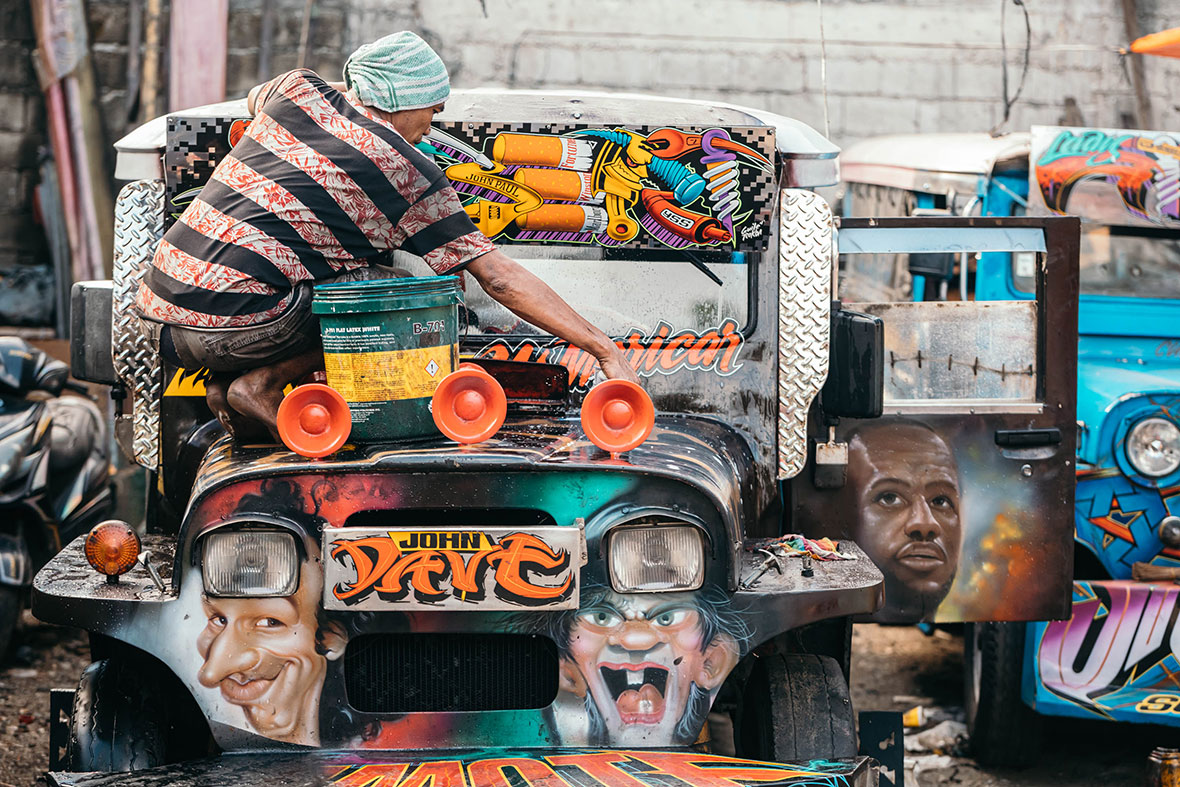
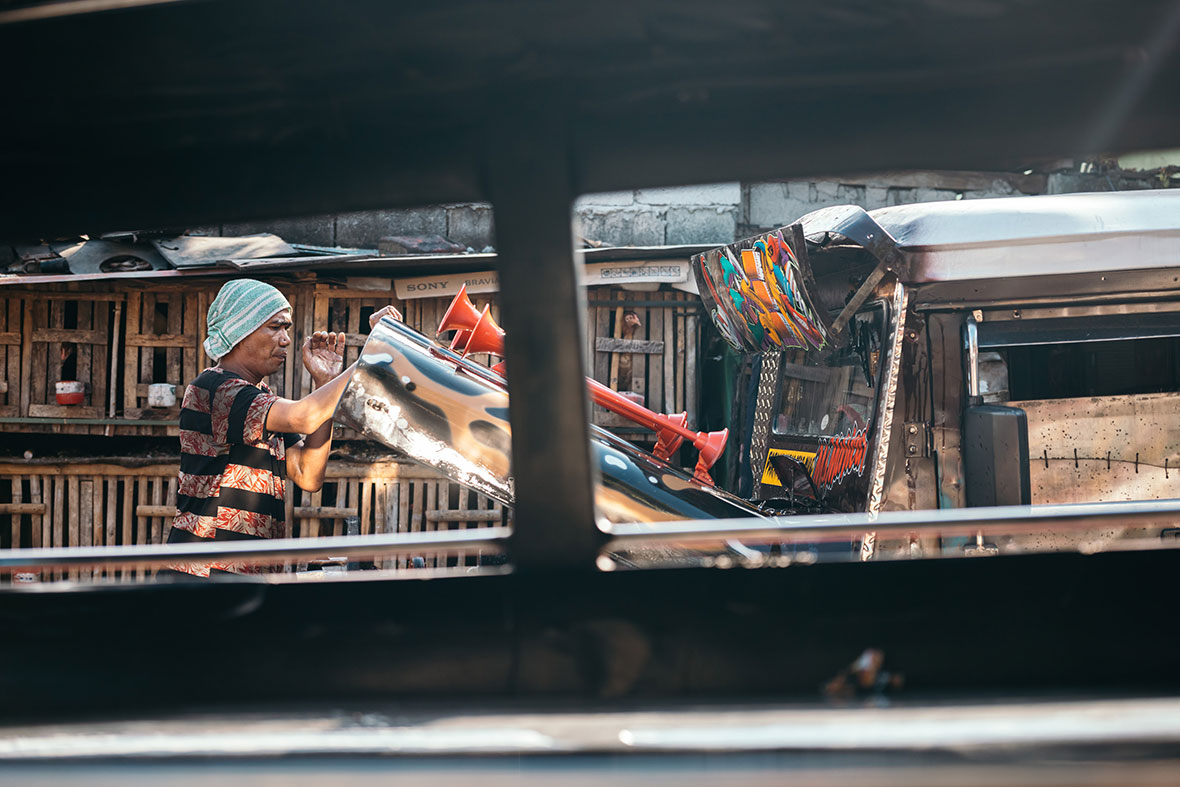
Yet the plan isn’t without its critics, and jeepney drivers have gone on multiple strikes to protest. Drivers who wish to keep their jobs were required to upgrade to one of the newer models, but so few have done so that the government has delayed the deadline for another year. Jeepneys that pass a “roadworthiness test” are given an additional year’s lease on life. It’s not difficult to see why there’s such a lack of compliance: the required costs of a new jeepney model range between $32,000 and $44,000, but most drivers only make around $10 per day. The government has developed a loan scheme to help fund the transition, but it’s restrictive and leaves many owners with no assistance. Some critics argue that for the plan to be realistic, the transportation sector would need to be state-run.
Amidst all the traffic issues, the culture and art of the jeepney are a distant afterthought and the future for artists like Nicola and Rokba is wildly uncertain now. Much of the industry that’s grown up servicing and decorating traditional jeepneys could disappear, including Nicola and Rokba’s garage. “Everyone is affected,” Nicola says. “It’s not just us. It’s the barkers who corral riders to empty seats for change. The drivers and mechanics. The garages. Everyone.”
When asked what they’ll do next, the duo’s answers offered a glimpse of their resilience and optimism: Nicola says he’ll focus on his tattoo business, which he already does now on the side. Rokba just laughs: “I’ll get some rest.”
但是对于这项政策也招来了很多批评的声音。吉普尼司机多次罢工表示抗议。想要保住饭碗的司机就要更换新车,但很少司机这样做,为此政府不得不将最后期限推迟一年。通过 “车辆适用性能测试” 的吉普尼车将可以获得额外一年的行驶寿命。不难理解为什么那么多人不愿意接受这项政策:新的吉普尼车型价格为 20 至 30 万人民币,但大多数司机每天收入只有 70 块。当地政府制定了一项贷款计划来为过渡期提供资助,但条件限制很多,许多司机都无法获得帮助。一些批评者认为,要让这项计划得到落实,就要让交通运输行业国营化。
在面对这些交通问题时,人们忽略了吉普尼的文化和艺术,对 Giele 和 Rokba 这些艺术家来说,未来充满了不确定性。那些与传统吉普尼车维修和装饰相关的行业可能会逐渐消失,包括 Giele 和 Robka 的车库。“每个人都会受到影响。”Giele 说,“不仅是我们,为了应对政策我们或许要将所有人都赶走。包括司机、机械师,车库,所有人。”
当被问及将来有何打算时,他们却很灵活和乐观 —— Giele 表示他将把重心放在自己的纹身事业,这也是他现在已经在做的工作;而 Rokba 则笑着说:“我要先给自己放个假。”
Like our stories? Follow us on Facebook and Instagram.
Contributor: Mike Steyels
Photographer: Jilson Tiu
Chinese Translation: Olivia Li


